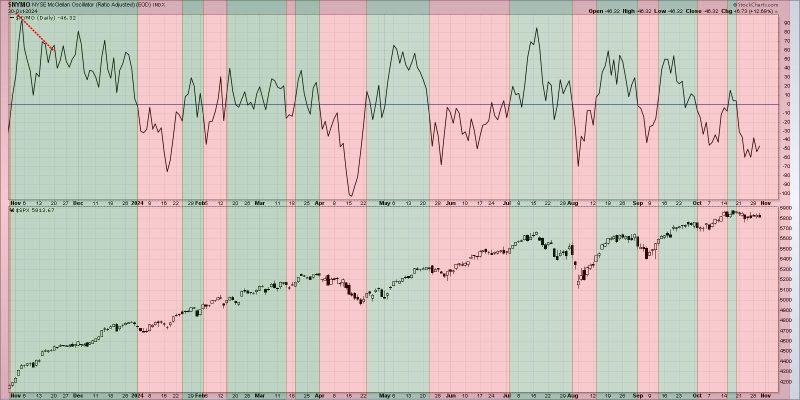In the world of trading and investing, one key concept that analysts and traders often refer to is breadth divergences. These divergences are considered indicators of potential shifts in market sentiment and can provide important signals for understanding market dynamics. By examining the relationship between price movements and market breadth, traders seek to gain insights into the overall health of a market and potential future trends.
Breadth divergences refer to situations where there is a disconnect between the performance of an index or asset and the underlying breadth of the market. Market breadth is a measure of the number of individual assets participating in a market move. For example, if a stock index is rising but only a small number of stocks are driving the gains while the majority are declining, this can be seen as a breadth divergence.
One common type of breadth divergence is a bearish breadth divergence, which occurs when a stock index reaches a new high while fewer individual stocks are also making new highs. This can suggest that the market rally is being driven by a smaller number of stocks and may not be sustainable in the long term. Conversely, a bullish breadth divergence happens when a stock index is falling but fewer individual stocks are also making new lows, indicating potential underlying strength in the market.
Traders use breadth divergences as a tool to confirm or challenge other technical indicators or market signals. They can provide valuable insights into market sentiment and help traders anticipate potential reversals or shifts in trend. By paying attention to market breadth and looking for divergences, traders can adjust their strategies and positions accordingly to navigate changing market conditions.
However, it is important to note that breadth divergences are not foolproof indicators and should be used in conjunction with other technical analysis tools and market research. Like any indicator, breadth divergences have their limitations and can sometimes provide false signals. Therefore, traders should always exercise caution and consider multiple factors when making trading decisions based on breadth divergences.
In conclusion, breadth divergences play a crucial role in helping traders understand market dynamics and anticipate potential trend changes. By analyzing the relationship between price movements and market breadth, traders can gain insights into market sentiment and make informed trading decisions. While breadth divergences can be powerful indicators, they should be used in conjunction with other tools and research to ensure a comprehensive and well-rounded trading strategy.



























